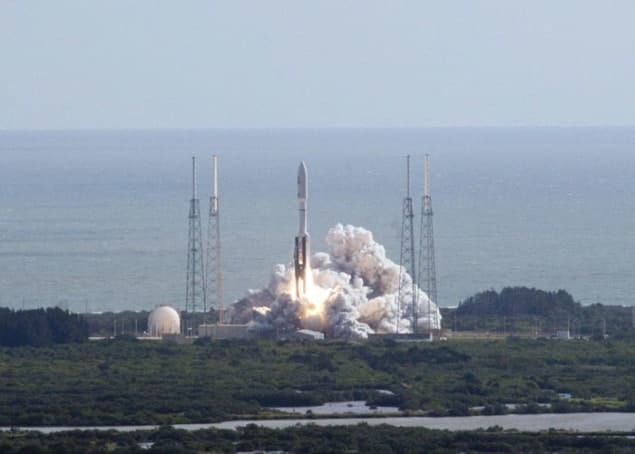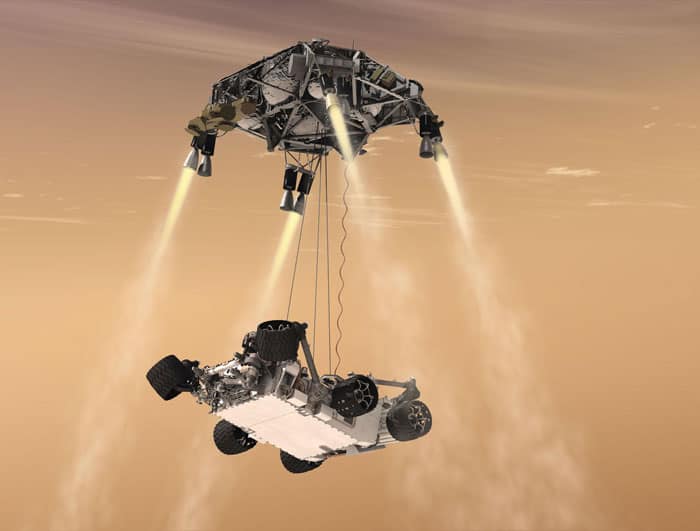
The most advanced and biggest craft ever to be sent to Mars is well on its way to the red planet after successfully taking off on an Atlas V rocket at the Kennedy Space Center in Florida at 10.02 a.m. local time on 26 November. The 900 kg nuclear-powered craft, dubbed Curiosity, is due to land on Mars on 6 August 2012 after a 9-month journey. It is designed to determine whether life could have ever arisen on the red planet, as well as to characterize the Martian geology and climate.
Costing $2.5bn, Curiosity will carry ten science instruments, including cameras and spectrometers, to determine the composition of the Martian surface and attempt to detect the chemical building blocks of life. The craft will use a drill and scoop at the end of its robotic arm to gather soil and powdered samples of rock, which it will then pass to its internal instruments.
Some instruments have never been used by missions to Mars before. One of these – ChemCam – will involve firing a laser with a 1067 nm wavelength and a power of 10 MW to deposit 15 mJ of energy onto a millimetre spot of rock to break it down. Curiosity will then collect and analyse the spectrum of the light that has been emitted by the vaporized rock to study its chemical composition.
During its two-year mission, the rover will also characterize radiation found near the surface of Mars to determine the viability and shielding needed for human explorers. Rather than just using solar panels for power, Curiosity will also be fuelled by a plutonium battery, which will generate electricity from the heat of radioactive decay.
“Curiosity is the first rover designed to be both field geologist and portable laboratory,” says Aileen Yingst, deputy principal investigator for a camera mounted on the robotic arm of the rover – the Mars Hand Lens Imager. “It has many of the characteristics of other rovers, but it also has instruments that will allow it to look for evidence of carbon compounds in samples.”
Rocket-powered landing
Curiosity’s target landing area is the Gale crater – a 150 km-wide basin that is believed to be around 3.5 billion years old. Curiosity, which is five times as heavy as the Spirit and Opportunity rovers that have been deployed on Mars for the last seven years, will test a novel type of landing as it is too heavy to employ airbags to cushion its descent as previous Mars rovers have done.
Instead, Curiosity will enter the Martian atmosphere in a pod, which will protect it from the intense heat. The pod will then deploy a parachute once it is within 10 km of the surface, after which the heat shield will fall off and a rocket-powered descent stage, dubbed a “sky crane”, will use rockets to slow the craft’s journey to the surface.
Once it is within 1.8 km of the surface, Curiosity, together with the sky crane in which it is attached, will separate from the pod and slowly descend to the surface. The sky craft will then lower Curiosity to the surface via three tethers as it hovers about 20 m above ground. NASA hopes the sky crane could be used in a future manned mission to the red planet.
“[Curiosity] will tell us critical things that we need to know about Mars; and while it advances science, we’ll be working on the capabilities for a human mission to the red planet and to other destinations where we’ve never been,” NASA administrator Charles Bolden said after Curiosity took off for Mars.




